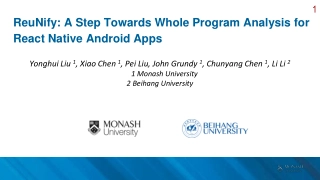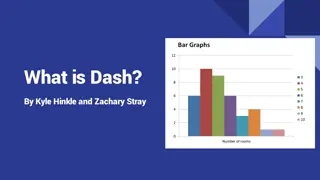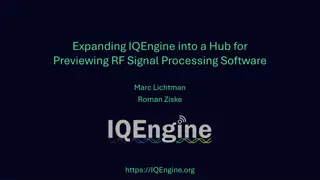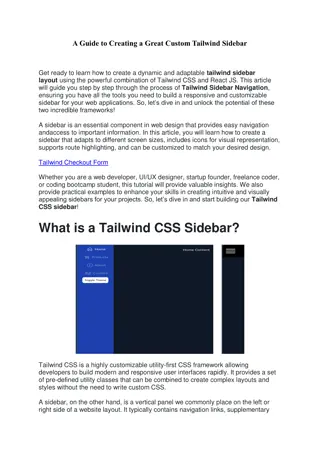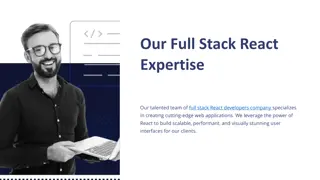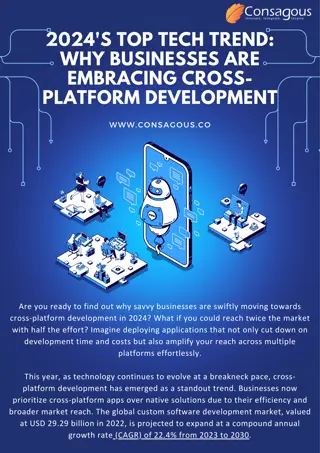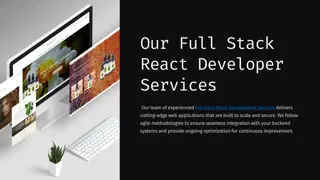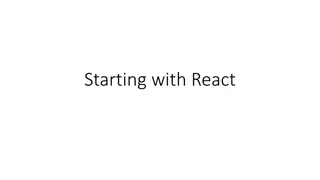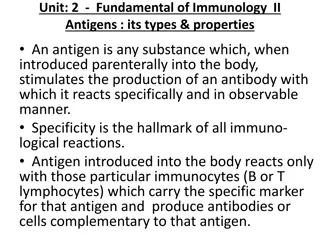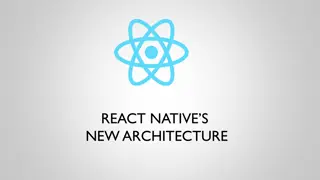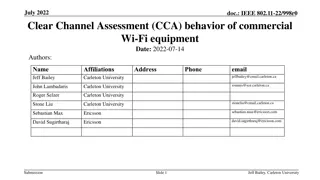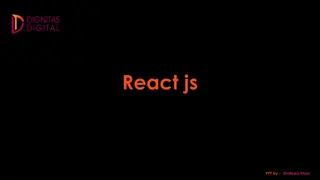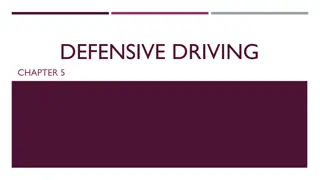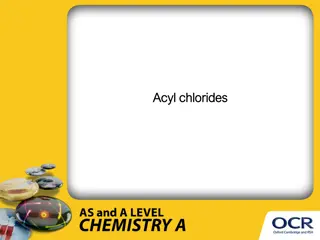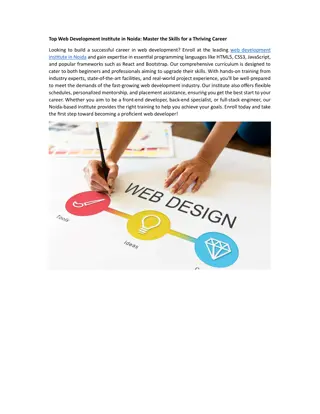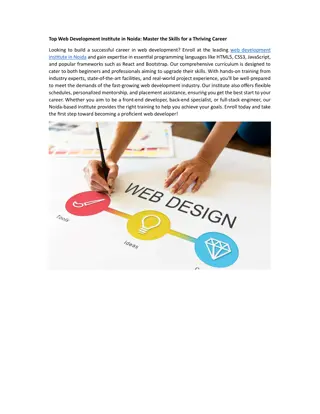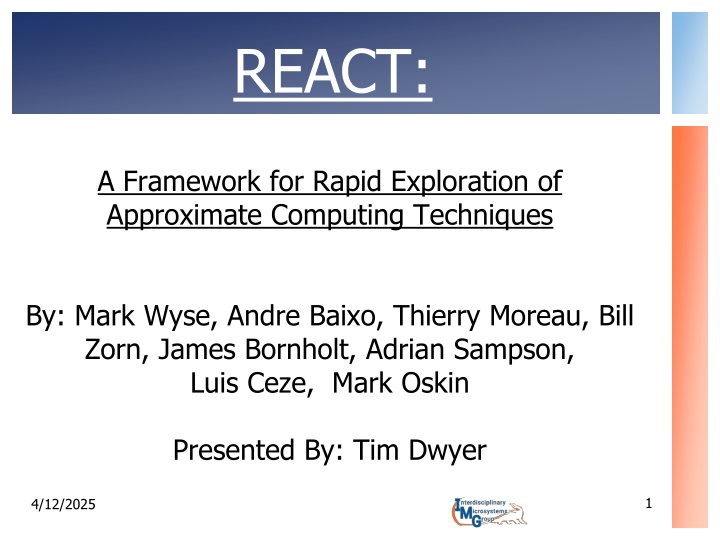
Exploring REACT Framework for Approximate Computing Techniques
Discover the REACT framework, a powerful tool for rapid exploration of approximate computing techniques. Learn about its motivation, framework, and application profiling for efficient estimation of quality-efficiency trade-offs. Dive into energy modeling and fine-grained approximations for comprehensive insights.
Download Presentation

Please find below an Image/Link to download the presentation.
The content on the website is provided AS IS for your information and personal use only. It may not be sold, licensed, or shared on other websites without obtaining consent from the author. If you encounter any issues during the download, it is possible that the publisher has removed the file from their server.
You are allowed to download the files provided on this website for personal or commercial use, subject to the condition that they are used lawfully. All files are the property of their respective owners.
The content on the website is provided AS IS for your information and personal use only. It may not be sold, licensed, or shared on other websites without obtaining consent from the author.
E N D
Presentation Transcript
REACT: A Framework for Rapid Exploration of Approximate Computing Techniques By: Mark Wyse, Andre Baixo, Thierry Moreau, Bill Zorn, James Bornholt, Adrian Sampson, Luis Ceze, Mark Oskin Presented By: Tim Dwyer 1 4/12/2025
Motivation/What is Being Solved? but accurately estimating these quality-efficiency trade-offs requires significant effort for both researchers and practitioners. Time/cost constraints on validating approximate computing techniques in developmental stage: Approx. hardware often modeled with power modeling tools Approx. software often rewritten or manually error injected 2 4/12/2025
Framework/How is it Being Solved? We propose REACT, a modeling framework allowing quick and accurate exploration of the efficiency accuracy trade-off created by approximate computing. Consists of: Custom application profiler Linear energy model User-directed error injection quality model 3 4/12/2025
What Are We Looking For? Type of approximation? Multiple, room for non-conceived methods Approximation strategy? Rapid evaluation of multiple approximation strategies How is it done? Application profiling, energy modeling, error injection What is being approximated? Instructions and Functions* How to determine what to approximate? User defined How much approximation is acceptable? User defined What applications are being targeted? User defined 4 4/12/2025
Application Profiling the profiler simulates a tournament-style branch predictor and multi-level data cache hierarchy. Implemented within Intel s Pin [7] framework Groups instructions into categories for energy model Profiling data aggregated at function level 5 4/12/2025
Energy Modeling REACT uses a simplified linear energy model to estimate the total energy consumption of an application s execution Captures dynamic cost of architectural & micro-architectural events Captures static cost of architectural structures Inputs: application profile, energy models, and architectural parameters Outputs: precise and approximate energy totals 6 4/12/2025
Fine-Grained Approximations Fine-grained approximation techniques operate at the event level, replacing individual operations with approximate versions. Modifies one or more architectural parameter of baseline system. Ex: model reduces the energy consumption of integer arithmetic operations to model approximate arithmetic instructions Energy cost is computed in the same way as baseline cost, but using appropriatelymodified architectural parameters Multiple orthogonal fine-grain approximations can be collected into a set of modified parameters 7 4/12/2025
Coarse-Grained Approximations Coarse-grained approximation techniques replace entire application phases with approximate implementations. Phases restricted to functions 1. Compute precise baseline, then scale each term affected by coarse approximation by user-specified factor. 2. Prorates static cost according to speed variations introduced by the approximation technique 3. Technique specific dynamic invocation and static costs introduced: Dynamic invocation: (number of invocations) x (per-invocation cost) Static cost: (power) x (C.P.I) x (Instructions) 4/12/2025 8
Energy Model Validation REACT employs a custom linear energy model to estimate the energy savings available through approximation. REACT trades-off the accuracy of existing energy and power modeling tools for the rapid exploration of techniques by focusing on first-order concerns Average energy error of 0.87% (0.31% 1.38%) when compared to McPAT power modeling framework 9 4/12/2025
Quality Modeling REACT performs quality modeling via user-directed error injection. Extends ACCEPT compiler framework Errors injected at two granularities: Fine and Coarse Fine:error injected after each instruction Values are marked as approximate or precise When compiled w/ ACCECPT, instructions marked as approximate & intercepted with a hook to a user-defined error injection routine Error routine invoked at runtime 10 4/12/2025
Quality Modeling Coarse: errorinjectedon output of functions Injection routine modifies the outputs of a function Should be representative of the respective approximation technique used ACCEPT imposes no restrictions on type of error introduced Ex: when evaluating neural acceleration, user may decide to evaluate a neural network or instead sample a probability distribution that produces a similar quality degradation 11 4/12/2025
Taxonomy of Approximations we select only a few techniques found in literature, although our current taxonomy is much larger and continues to grow. Taxonomies may be examined from other dimensions including determinism, hardware versus software, computational resources affected, and granularity 12 4/12/2025
Questions? 13 4/12/2025
Exam Questions What is one major problem for engineers/developers when exploring multiple approximation techniques? A. Abundance of positive experimental results to draw conclusions from B. Cost/time constraints to explore each technique C. Incompatible hardware/software D. Destroying hardware 14 4/12/2025

